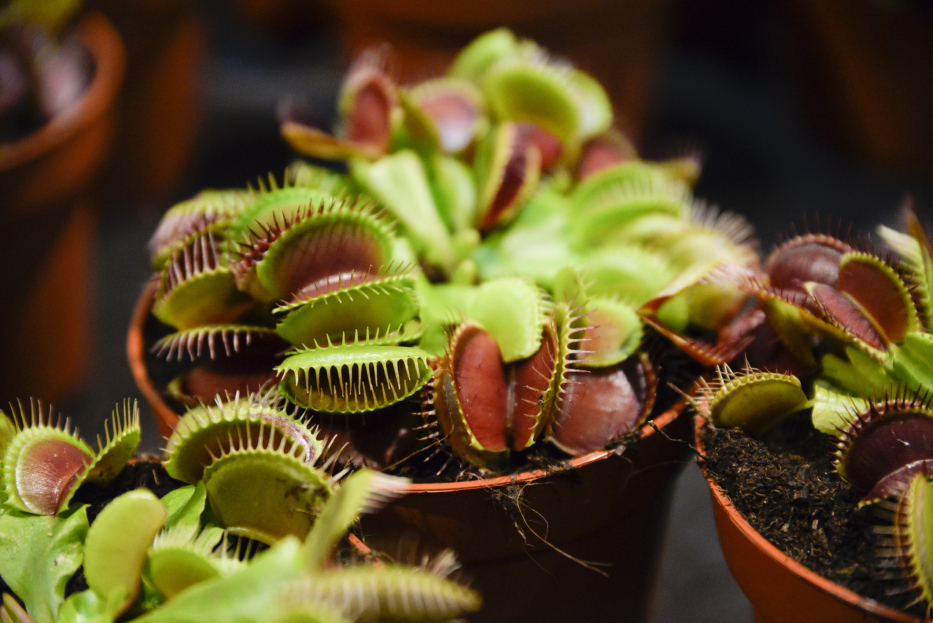
The Venus Flytrap (Dionaea muscipula) is one of the most fascinating and unique houseplants you can grow. Known for its carnivorous nature, the Venus Flytrap catches and digests insects to supplement its nutrient intake. With its distinct “trap” leaves, this plant is a conversation starter and a fun addition to any plant collection. While it may seem exotic and complicated to care for, the Venus Flytrap is surprisingly easy to grow when you meet its specific needs. Here’s everything you need to know about caring for your Venus Flytrap houseplant.
Venus Flytraps thrive in bright, direct sunlight. For optimal growth, place your Venus Flytrap in a sunny spot where it can receive at least 4-6 hours of direct sunlight each day. A south- or west-facing windowsill is ideal. If you don’t have access to natural sunlight, you can supplement with a grow light to provide the necessary light intensity.
Without sufficient sunlight, the plant may become leggy and fail to produce healthy traps. If you notice the traps turning yellow or brown, it could be a sign that the plant is not receiving enough light.
Venus Flytraps are sensitive to the minerals found in tap water, so it's best to water them with distilled water, rainwater, or purified water. Tap water contains salts and minerals that can build up in the soil, leading to root damage and poor plant health.
Water your Venus Flytrap thoroughly, ensuring that the soil is consistently moist but not waterlogged. The plant enjoys a humid environment, so it’s important to keep the soil damp, especially in warmer conditions. A good rule of thumb is to water the plant when the top layer of soil feels dry, but the soil should never be allowed to dry out completely.
If you're growing your Venus Flytrap in a pot with a saucer, you can let the pot sit in a shallow tray of water to keep the soil moist. Just make sure the pot has good drainage to prevent root rot.
Venus Flytraps are native to temperate climates and prefer warm temperatures between 70°F and 95°F (21°C to 35°C) during the growing season (spring and summer). During the dormant period (fall and winter), the plant can tolerate cooler temperatures, ideally between 32°F and 50°F (0°C to 10°C).
While Venus Flytraps don’t require high humidity, they do appreciate moderate humidity levels. If your home is particularly dry, you can increase humidity by placing the plant on a humidity tray or using a room humidifier. However, Venus Flytraps are relatively adaptable to average indoor humidity levels.
Venus Flytraps require acidic, well-draining soil that is low in nutrients. The best soil for these plants is a mix of sphagnum moss and perlite or sand. Avoid using regular potting soil, as it is too rich in nutrients and can harm the plant. You can find pre-made carnivorous plant soil mixes at garden centers or online.
When choosing a pot, make sure it has drainage holes to prevent water from accumulating at the bottom, which can lead to root rot. A plastic or glazed ceramic pot is a good choice, as these materials retain moisture without letting the soil dry out too quickly.
One of the most interesting aspects of the Venus Flytrap is its carnivorous feeding habits. The plant catches insects using its modified leaves, which snap shut when triggered by tiny hairs inside the traps. While Venus Flytraps can catch their own food, they may also benefit from occasional feeding if kept indoors, where insects are less abundant.
If your plant is not catching enough insects naturally, you can feed it small bugs such as flies, ants, or spiders. Avoid feeding it large insects, as this can damage the traps. You can also feed the plant small pieces of meat or fish, but avoid using processed foods, as they may contain additives that could harm the plant. When feeding, place the insect in the trap and wait for it to snap shut. Be sure to remove any uneaten food after a few days to prevent rotting.
It’s important to note that Venus Flytraps don’t need to be fed regularly. They can survive without feeding for weeks or even months, especially if they are receiving enough sunlight. Overfeeding can lead to stress and weakened traps.
Venus Flytraps require a period of dormancy during the winter months to remain healthy. During dormancy, the plant’s growth slows down, and the traps may die off. This is completely normal, and the plant will regenerate new traps in the spring.
To encourage dormancy, reduce watering and move the plant to a cooler location (around 32°F to 50°F, or 0°C to 10°C) for about 3-4 months. You can place it in a cool basement, garage, or unheated room. Keep the plant moist but not wet during this time. After the dormancy period, bring the plant back to its normal growing conditions, and it should begin to grow new traps.
To keep your Venus Flytrap healthy, remove any dead or dying traps regularly. If a trap turns black or brown after catching an insect, trim it off at the base to prevent it from affecting the rest of the plant. This will also encourage new trap growth.
You can also trim any dead or yellowing leaves to maintain the plant’s appearance and prevent disease. However, avoid cutting off healthy traps, as this will reduce the plant’s ability to catch food.
Venus Flytraps are non-toxic to pets, making them safe to keep around cats and dogs. However, as the plant uses its traps to catch insects, it may be tempting for curious pets to nibble on the leaves. While the traps won’t harm your pets, it’s a good idea to keep the plant out of reach to avoid any accidental damage to the plant or the traps.